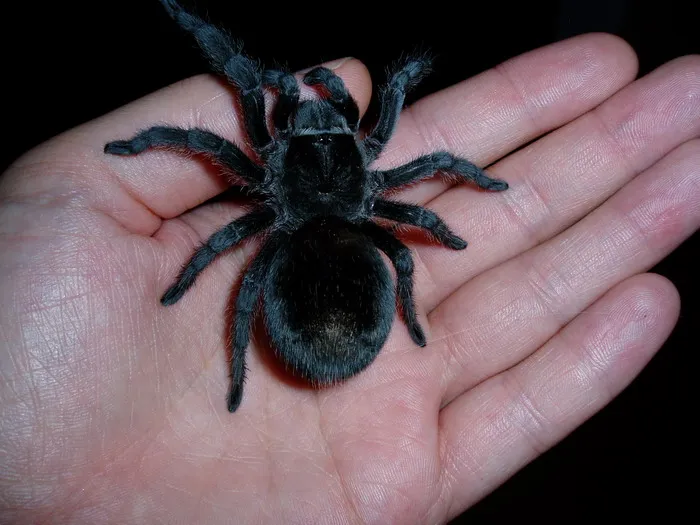What are Brown and Black Tarantulas
Brown and black tarantulas are fascinating arachnids that belong to the Theraphosidae family. These large, hairy spiders are found in various habitats across the globe, from the deserts of the southwestern United States to the tropical rainforests of South America. Their impressive size and unique characteristics make them a popular subject of interest for both scientists and hobbyists. These spiders are nocturnal creatures, often hiding during the day and becoming active hunters at night. Despite their intimidating appearance, most tarantula species are not considered dangerous to humans, although their bite can be painful. The diversity in species also offers a wide array of colors, patterns, and behaviors, making them a captivating subject of study and observation. The following facts aim to provide a comprehensive insight into the world of brown and black tarantulas.
Physical Characteristics of Brown and Black Tarantulas
Understanding the physical attributes of brown and black tarantulas is crucial to identifying and appreciating these creatures. Their bodies are divided into two main parts: the cephalothorax (fused head and chest) and the abdomen. The cephalothorax houses the eyes, mouthparts (chelicerae and pedipalps), and legs, while the abdomen contains the digestive and reproductive organs. They possess eight legs covered in sensory hairs, which help them detect vibrations and navigate their environment. The chelicerae, located near the mouth, are equipped with fangs used for injecting venom into prey. The pedipalps, resembling small legs, aid in manipulating food and serve sensory functions. These spiders also have spinnerets at the end of their abdomen, which they use to produce silk for creating webs, lining burrows, and laying eggs.
Size and Appearance
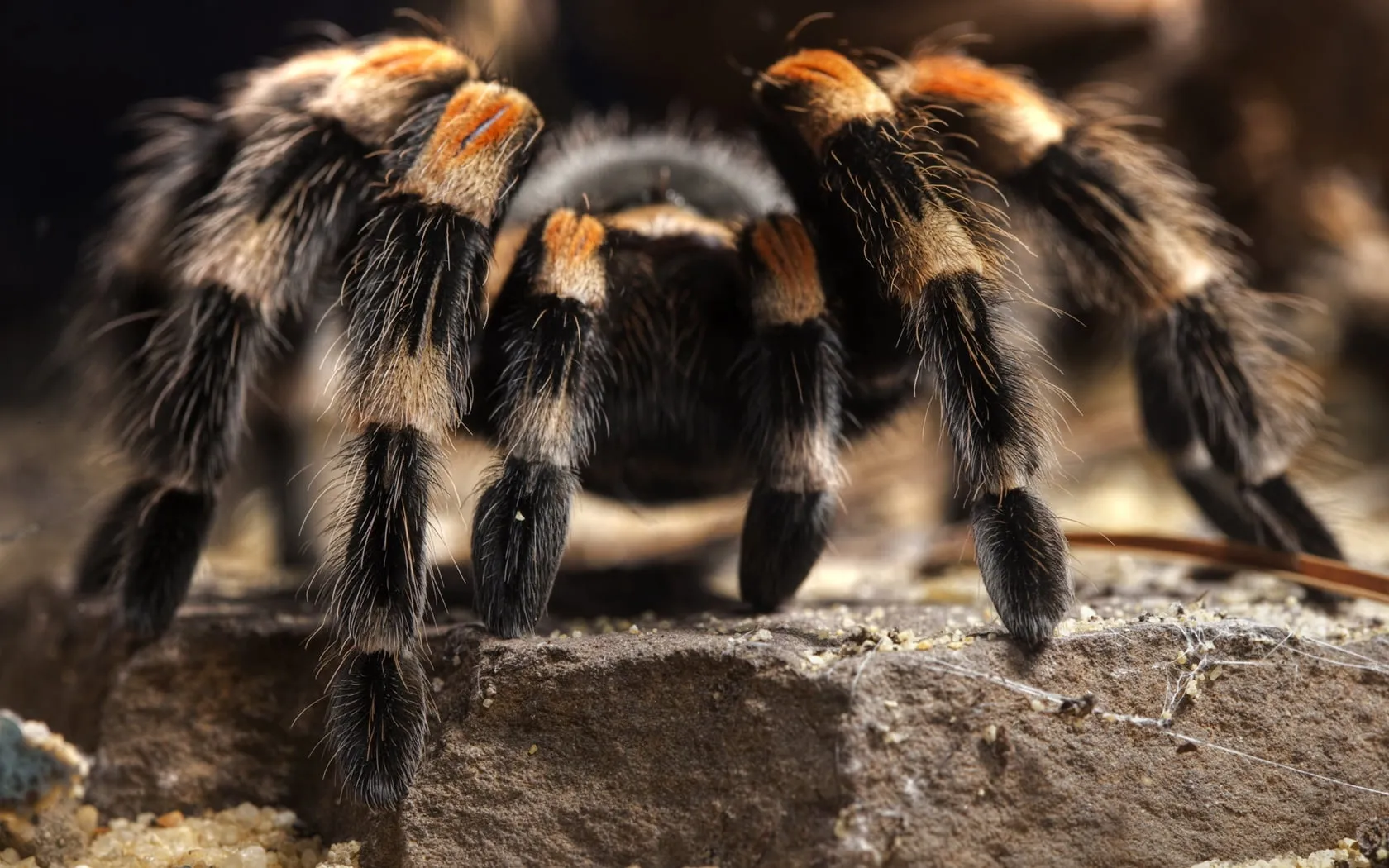
Tarantulas vary significantly in size, with some species being relatively small, while others are among the largest spiders in the world. The size of a tarantula is generally measured by its leg span, which can range from a few inches to over 10 inches. Generally, females tend to be larger than males. Their bodies are covered in a dense layer of setae, or hairs, which give them their characteristic fuzzy appearance. These hairs can be urticating, meaning they can cause irritation if they come into contact with skin. This is a defense mechanism against predators. The color of tarantulas varies greatly, with shades of brown and black being most common, although some species exhibit vibrant colors such as blue, orange, or red. The overall appearance of a tarantula is imposing, a result of their size, hairiness, and color patterns.
Color Variations
While brown and black are the most prevalent colors, tarantulas display a diverse range of hues and patterns. The specific coloration can vary depending on the species, age, and even the environmental conditions. Some species have solid colors, while others exhibit intricate patterns and markings on their bodies and legs. Some tarantulas have contrasting colors on their legs and bodies, creating a striking visual effect. The variations in color can serve different purposes, such as camouflage, attracting mates, or signaling warnings to predators. The intensity of their colors can also change as the spider molts, shedding its exoskeleton and revealing new, vibrant colors underneath. The diversity in colors adds to the fascination and appeal of these spiders, as each species presents a unique and captivating appearance. This image illustrates the various size of tarantulas.
Habitat and Distribution of Brown and Black Tarantulas
Brown and black tarantulas inhabit a wide range of environments, from arid deserts to lush rainforests. Their distribution spans across several continents, including North and South America, Africa, Asia, and Australia. The habitat they occupy influences their physical characteristics, behavior, and lifestyle. Understanding their natural habitat is essential for both appreciating these spiders in their natural environment and providing proper care for them in captivity. The ability of tarantulas to adapt to diverse climates and conditions showcases their resilience and adaptability. They play a significant role in their ecosystems, helping to control insect populations and serving as a food source for other animals. This image depicts a tarantula in its natural habitat.
Natural Habitats
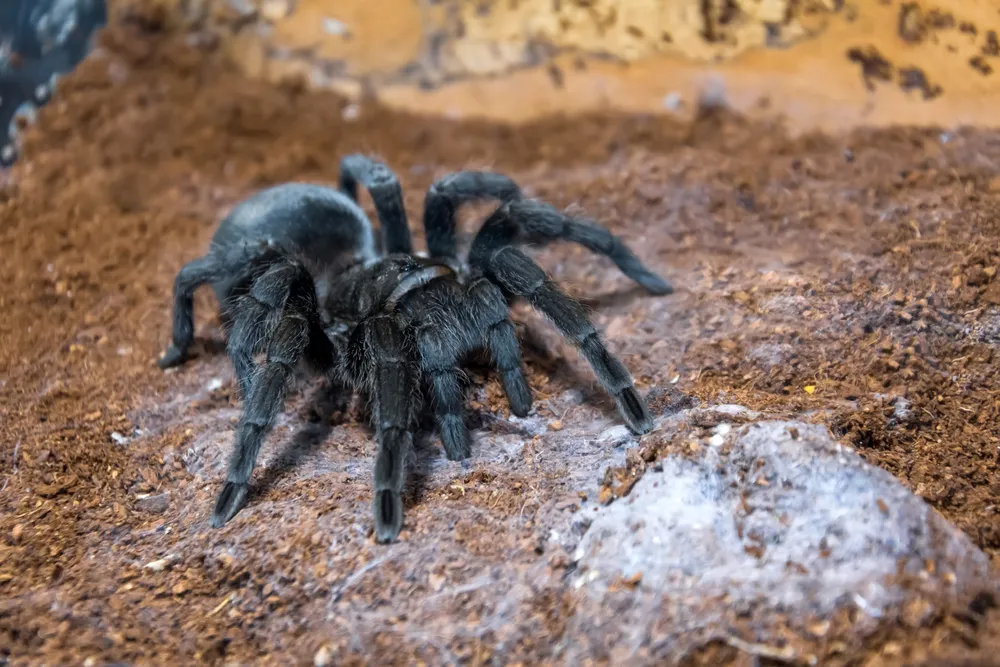
Tarantulas are found in a variety of habitats. Terrestrial species are common, living in burrows they dig themselves or occupy abandoned burrows made by other animals. Arboreal species, on the other hand, live in trees, often constructing silk webs among the branches and leaves. Some tarantulas prefer humid environments, while others thrive in drier climates. The specific habitat of a tarantula species depends on its adaptations and preferences. The ground-dwelling tarantulas often prefer to live in areas with soft soil, which makes it easier to dig their burrows. Their shelters provide protection from predators, extreme temperatures, and desiccation. Arboreal species have adapted to climb and navigate trees, using their claws and hairs to grip surfaces. The availability of food, shelter, and suitable climatic conditions are all key factors that influence the natural habitats of brown and black tarantulas.
Geographical Distribution
The geographical distribution of tarantulas is vast, with different species inhabiting different regions of the world. The Americas have a rich diversity of tarantulas, from the United States and Mexico to the tropical regions of South America. Several species are also found in Africa, Asia, and Australia. Some species are endemic to specific areas, meaning they are only found in a particular location. Other species have a wider distribution, occupying multiple countries or even continents. Factors such as climate, vegetation, and the presence of other species influence the distribution of tarantulas. Human activities, such as deforestation and habitat destruction, can also impact their distribution, leading to population declines in some areas. Knowing the geographical distribution of tarantulas is essential for conservation efforts and understanding the diversity of these creatures.
Behavior and Lifestyle of Brown and Black Tarantulas
Tarantulas are primarily nocturnal creatures, spending the day hidden in their burrows or hiding spots and becoming active at night. Their behavior varies based on the species, with some being more docile and others more defensive. Understanding their lifestyle is crucial to appreciating their role in the ecosystem and ensuring their survival. They are skilled hunters, using their senses to detect prey and ambush them. They play an important role in controlling insect populations and contribute to the overall health of the environments they inhabit. Their intricate behaviors and survival strategies make them a fascinating subject of study and admiration. The following section details the feeding habits and defense mechanisms they have evolved to survive.
Feeding Habits
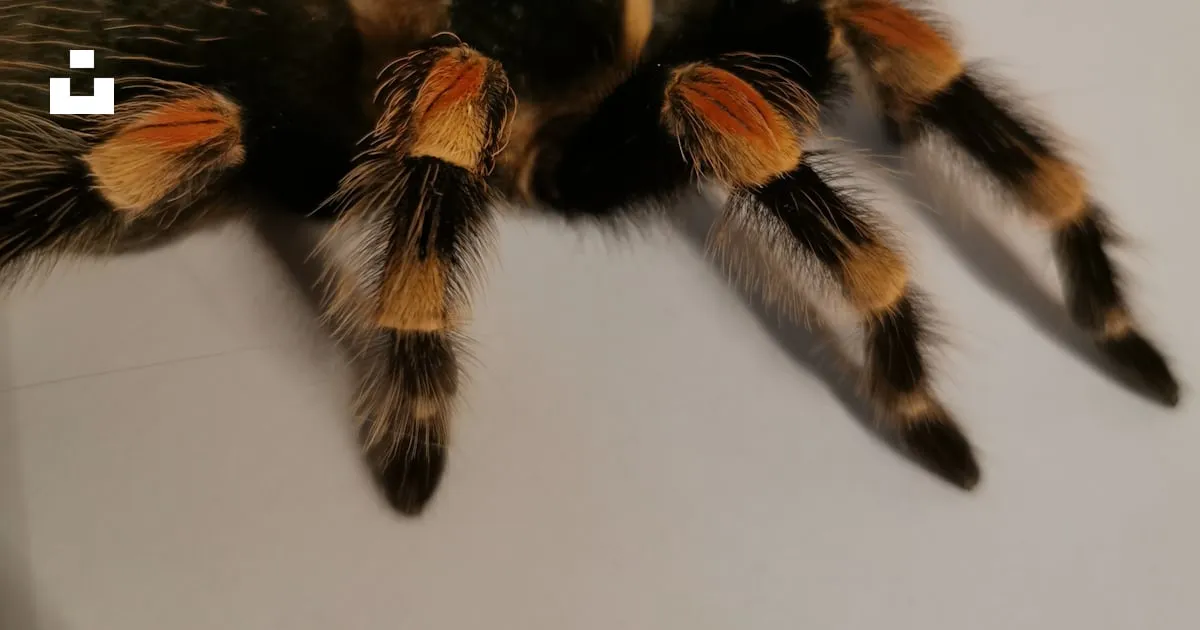
Tarantulas are carnivorous predators, feeding primarily on insects, but they will also consume other small animals like lizards, frogs, and even small birds, depending on the size of the tarantula. They use their fangs to inject venom into their prey, immobilizing it and initiating the digestion process. They then use their chelicerae to crush and break down the prey. Tarantulas typically eat their food outside of their burrow and are known to hunt at night. The frequency of feeding varies with the age and species of the tarantula. Younger tarantulas need to eat more often than adults. Captive tarantulas can be fed a variety of insects such as crickets, mealworms, and cockroaches. Providing a diverse diet ensures the tarantula receives the necessary nutrients for growth and survival. This image depicts how a tarantula hunts for food.
Defense Mechanisms
Tarantulas have a variety of defense mechanisms to protect themselves from predators. One common defense is the use of urticating hairs, which are barbed hairs located on their abdomen. When threatened, the tarantula flicks these hairs towards the attacker, causing irritation and discouraging further aggression. Some species also possess the ability to bite and inject venom, although their venom is not generally considered deadly to humans. Their coloration also plays a role in defense, with some species blending in with their surroundings to avoid detection. A tarantula will also try to escape if it is being threatened and will try to find a place to hide. The tarantula’s defense mechanisms are crucial for its survival in the wild, protecting it from predators and allowing it to thrive in its environment. This image depicts a tarantula’s defense mechanism.
Lifespan and Reproduction of Brown and Black Tarantulas
The life cycle of a tarantula is quite fascinating, characterized by a long lifespan and a unique reproductive process. The lifespan of a tarantula varies depending on the species, but it is generally longer for females than for males. Understanding their lifespan and reproductive behavior is essential for appreciating their place in the natural world. The reproduction cycle highlights the role tarantulas play in maintaining their population and ensuring the continuation of their species. The following sections explain the lifespan and reproduction cycles.
Lifespan
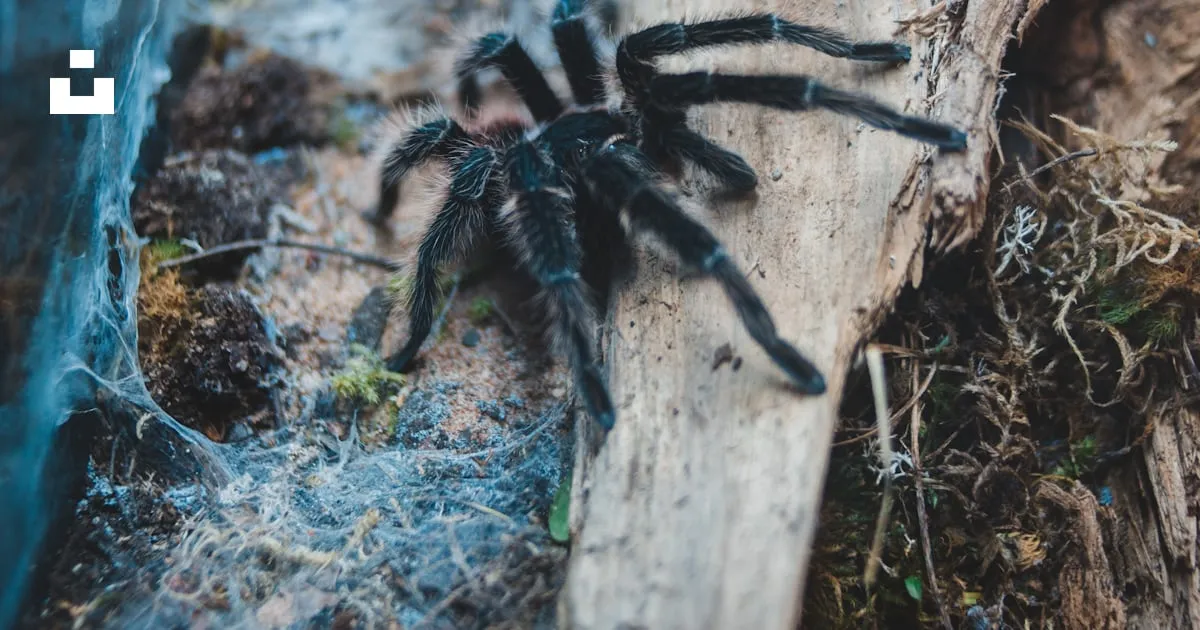
Tarantulas have a relatively long lifespan compared to many other invertebrates. Female tarantulas can live for several decades, with some species living for up to 25 years or more. Male tarantulas, however, typically have a much shorter lifespan, often only living for a few years after reaching maturity. The difference in lifespan is related to the reproductive process. Females continue to molt throughout their lives, allowing them to grow and remain healthy. Males, however, stop molting after reaching maturity and die shortly after mating. The long lifespan of female tarantulas allows them to reproduce multiple times, contributing to the survival of their species. This image shows the lifespan of a tarantula.
Reproduction
Reproduction in tarantulas involves a complex courtship ritual. The male tarantula must approach the female cautiously, often drumming on the ground to signal his presence. If the female accepts him, the male will deposit sperm onto a web mat. He then uses his pedipalps to transfer the sperm to the female’s epigastric furrow. The female lays her eggs in a silk egg sac, which she protects and carries until the spiderlings hatch. The number of eggs in an egg sac varies depending on the species. Once hatched, the spiderlings go through several molts before reaching adulthood. The reproduction cycle is a crucial part of a tarantula’s life, ensuring the continuation of the species. The survival rate of spiderlings can be low due to predation and other environmental factors.
Interesting Facts about Brown and Black Tarantulas
Brown and black tarantulas possess unique characteristics and behaviors that make them a source of wonder and fascination. From their remarkable hunting techniques to their intricate molting process, these spiders have adapted in remarkable ways to survive and thrive in their environments. They showcase the diversity and resilience of nature. Here are a couple of interesting facts about brown and black tarantulas to help appreciate their uniqueness.
Myth vs. Reality
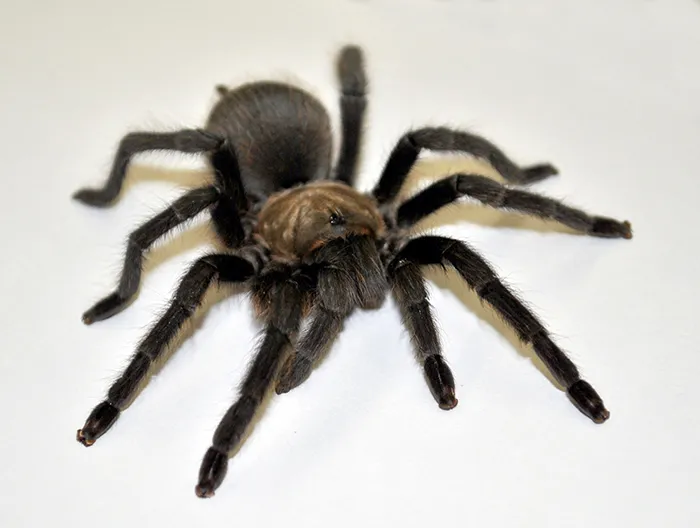
There are many myths surrounding tarantulas. One common myth is that tarantulas are highly dangerous and aggressive. In reality, most tarantulas are not aggressive and will only bite if they feel threatened. Another myth is that their venom is deadly to humans. While tarantula bites can be painful, their venom is generally not considered life-threatening. Some people also believe that tarantulas are fast and jump on people. While they can move quickly, they don’t jump and are more likely to try to escape. These myths often contribute to the fear and misunderstanding of these fascinating creatures. Educating people about the reality of tarantulas can help dispel these myths and promote a better understanding and appreciation of these animals.
Conservation Status
The conservation status of tarantulas varies depending on the species and their habitat. Some species are considered common and widespread, while others are threatened or endangered. Factors such as habitat loss, deforestation, and the pet trade can impact tarantula populations. Many conservation efforts are underway to protect tarantulas, including habitat preservation and regulating the pet trade. Educating the public about the importance of tarantulas and supporting conservation initiatives can help ensure the survival of these unique spiders. Protecting their habitats and promoting responsible pet ownership are key to ensuring their continued existence for future generations. The image shows the conservation status of the tarantulas.
How to Care for Brown and Black Tarantulas (If Kept as Pets)
Keeping a tarantula as a pet can be a rewarding experience for those who are fascinated by these creatures. However, it is essential to understand their needs and provide them with a suitable environment. Responsible pet ownership includes providing the right habitat, feeding them appropriately, and monitoring their health. Providing proper care ensures the tarantula’s well-being and allows the owner to enjoy the unique characteristics of these spiders. The following sections focus on the main aspects of caring for a pet tarantula.
Creating the Right Habitat
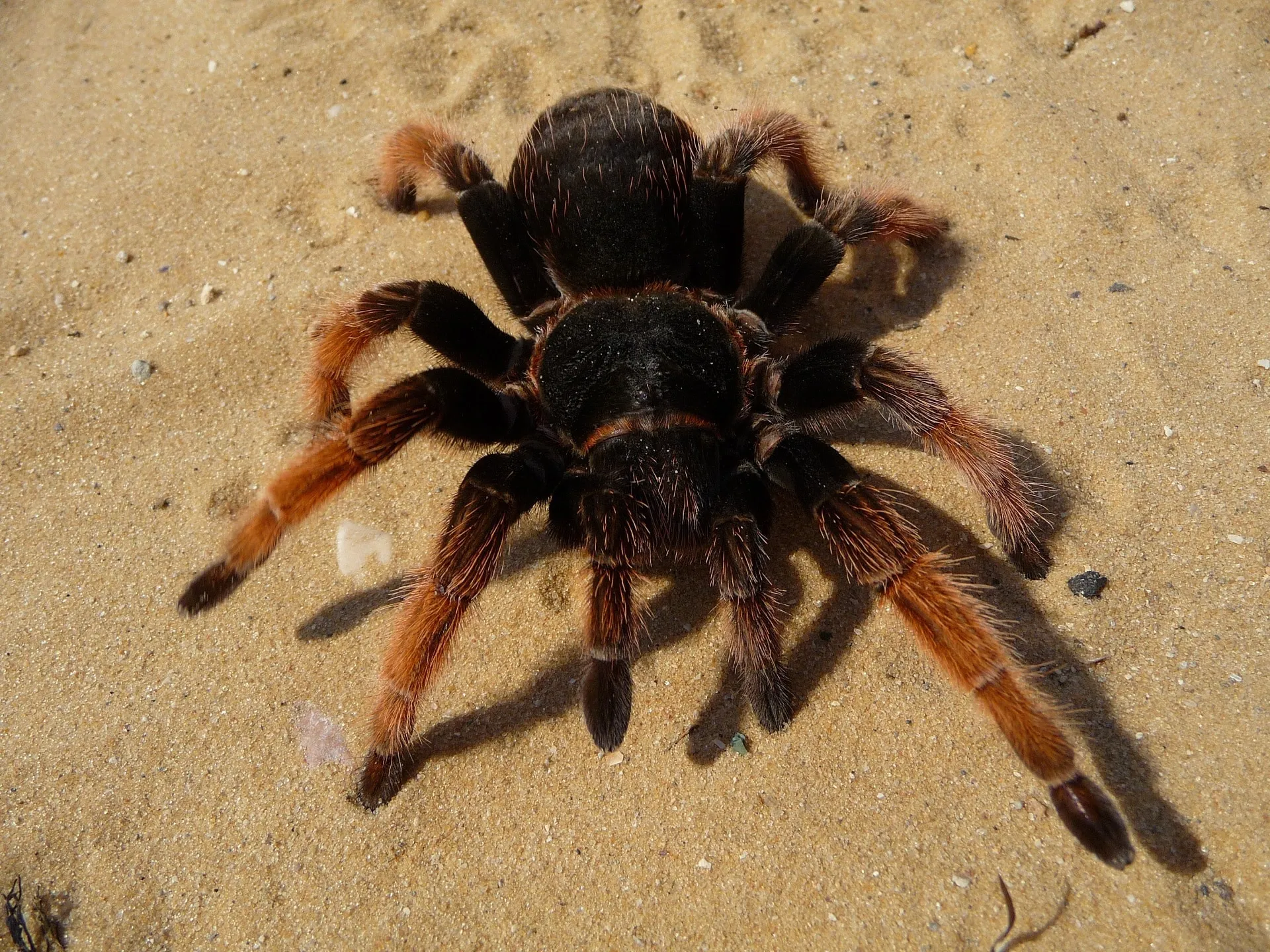
Creating a suitable habitat is essential for a pet tarantula’s well-being. The enclosure should be large enough to accommodate the tarantula’s size and allow for movement. The type of enclosure depends on the tarantula’s species (terrestrial, arboreal, or burrowing). A terrestrial tarantula needs a ground-level enclosure. An arboreal tarantula needs an enclosure that is taller than it is wide, such as a critter keeper or a tall glass terrarium. The enclosure should be well-ventilated and should be kept clean to prevent bacterial growth. The habitat should also include substrate, such as coconut fiber or peat moss, which helps to retain moisture and provide a natural environment for the tarantula. Hiding places, like cork bark or artificial plants, should also be included to provide security. The correct habitat is crucial for a tarantula’s health and comfort. This image depicts the habitat setup for a tarantula.
Feeding and Watering
Feeding and watering are essential aspects of tarantula care. Tarantulas are carnivorous and should be fed a diet of insects, such as crickets, mealworms, and cockroaches. The size of the prey should be appropriate for the size of the tarantula. Juvenile tarantulas should be fed more frequently than adults. Providing a constant water source is crucial for hydration. This can be achieved by providing a shallow water dish with fresh water or by misting the enclosure regularly. It is also important to remove any uneaten food from the enclosure to prevent mold growth. Monitoring the tarantula’s feeding habits and providing a proper diet ensure that it receives the nutrients it needs to stay healthy and thrive. This image depicts feeding a tarantula.
Common Health Issues
Like any pet, tarantulas can experience health issues. Common health problems include mites, fungal infections, and injuries. Mites can infest the tarantula and can be removed with the help of a vet. Fungal infections can occur in humid environments and can be treated with antifungal medications. Injuries can occur during molting or from falls. Proper care, including maintaining a clean environment and providing a balanced diet, can help prevent these issues. Consulting a veterinarian specializing in exotic animals can also help if a tarantula shows signs of illness. Early detection and treatment of health issues are crucial to ensure the long-term well-being of the tarantula. The image shows some of the most common health issues of tarantulas.
Conclusion
Brown and black tarantulas are captivating creatures with unique characteristics. Their physical appearance, behaviors, and habitats have made them subjects of scientific study and fascination. Whether you are interested in admiring them in their natural environments or considering keeping one as a pet, understanding their needs and behaviors is essential. By dispelling myths, promoting responsible pet ownership, and supporting conservation efforts, we can ensure the preservation of these amazing spiders for future generations. Their existence enriches our planet’s biodiversity and reminds us of the wonders of the natural world. Their presence encourages us to learn more about the animal kingdom and to appreciate the beauty and complexity of life on Earth.
